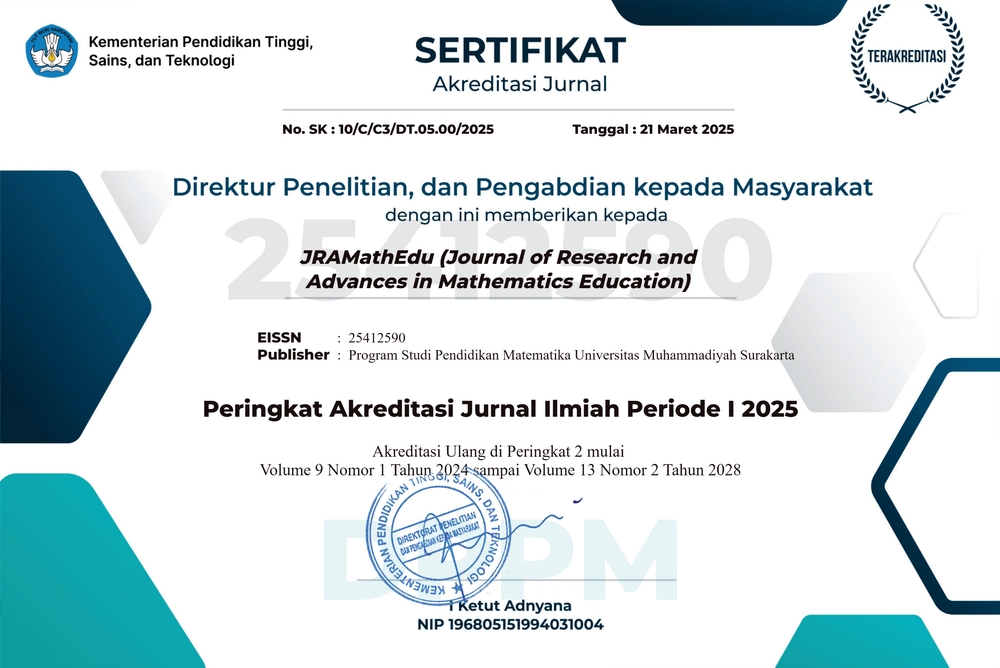The effectiveness of goal-free problems for studying triangle similarity in collaborative groups
DOI:
https://doi.org/10.23917/jramathedu.v6i1.11198Keywords:
Geometry, goal-free problems, cognitive load, collaborative learningAbstract
Similarity is a topic in Geometry which investigates similar elements of a plane. This topic has a high complexity that generates cognitive load in working memory. A deep understanding of the concept is needed to solve similarity problems. Based on cognitive load theory, learning by goal-free problems is suggested since it can minimize cognitive load. This research examined the effectiveness of presenting similarity inquiries using goalfree problems for learning by collaboration. Using a factorial design: 2 presentation techniques (goal-free vs. goal-given problems) x 2 groupings (collaborative vs. individual) in authentic classrooms, the experiment consisted of four consecutive phases: introductory, learning phase, retention test, and transfer test. One-hundred eleven eighth-graders from four classrooms in a junior high school in Yogyakarta, Indonesia, served as research participants. The findings showed that students who were learning using goal-free problems possessed significantly higher scores of retention and transfer tests, as well as experience lower cognitive load during both tests. On the contrary, it was found that studying individually yielded a significantly higher transfer score than studying collaboratively. Since there was no interaction effect, it may be concluded that goal-free problems can be effective for either collaborative or individual learning.
Downloads
Submitted
Published
How to Cite
Issue
Section
License

This work is licensed under a Creative Commons Attribution-NonCommercial 4.0 International License.


















